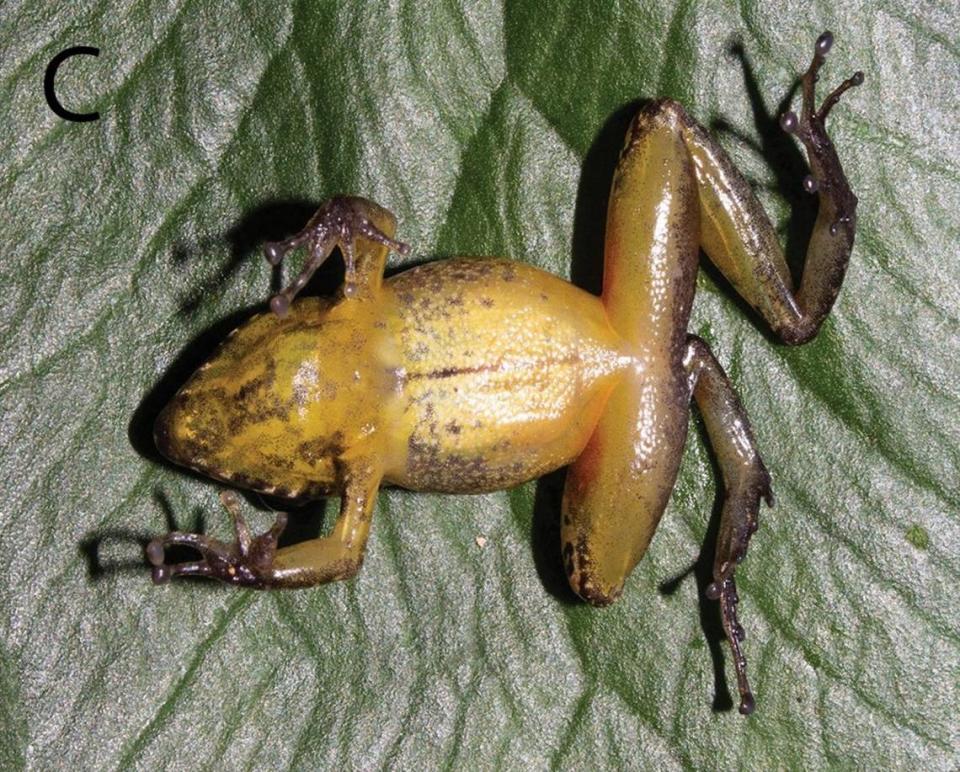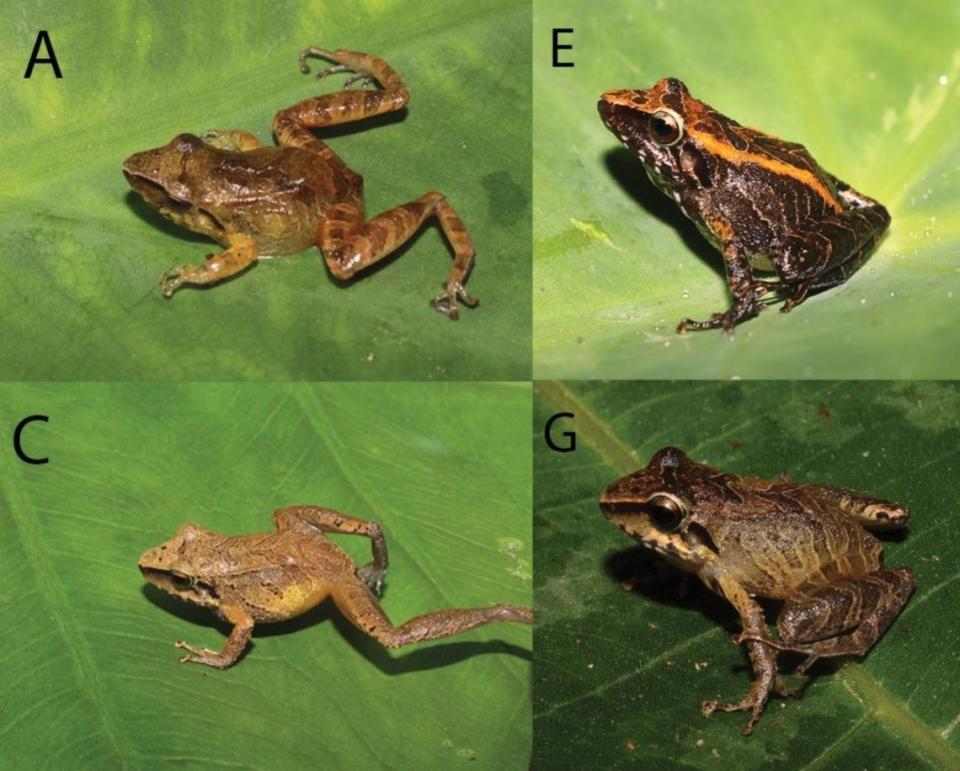‘Rubber’ mountain creature — with ‘cryptic’ looks — found in Peru. It’s a new species
Eclipsed by the much-louder animals nearby, a “cryptic” creature sat quietly on a wet leaf in a mountain forest of Peru. Something about the “rubber” animal caught the attention of passing scientists. It turned out to be a new species.
Researchers ventured into the mountains of Ayacucho several times between 2018 and 2021, according to a study published Dec. 20 in the journal ZooKeys. They were looking for frogs.
While searching the forests at night, researchers found 10 frogs perched on the leaves. They took a closer look at the animals and realized they’d discovered a new species: Pristimantis similaris, or the similar rubber frog.
Similar rubber frogs are small, measuring less than an inch in length, the study said. They have “oval” tongues, rough skin and “long, slender” legs.

Discover more new species
Thousands of new species are found each year. Here are three of our most eye-catching stories.
→ 8-eyed creature — with personality like 'Satan' — discovered
→ 'Ghost'-like creature with 'ample' genitalia found at power plant
→ 'Cryptic' 3-foot-long creature found in mangroves of Myanmar
Photos show a similar rubber frog. Overall, its body is an orange-brown color. Several darker-colored “chevrons” stretch across its back, researchers said. Its hind legs are striped, and its eyes are dark black with an outer red-orange ring. On its belly, the frog is creamy yellow with a few darker-colored speckles.

Similar rubber frogs vary in color and size with females typically being larger than males, the study said. Several photos show some darker brown and lighter tan frogs.
Researchers found the new species “perching on wet leaves” several feet off the ground at night. The frogs were often “near abandoned farms (or) less frequented roads.” Males were rarely heard calling and, when they did, were “overshadowed” by other, louder frogs.

Researchers said they named the new species after the Latin word for “similar” because of its similarity to other known species of frog.
So far, similar rubber frogs have been found in two mountainous forests of Ayacucho between elevations of about 3,900 feet and about 6,600 feet, the study said. Ayacucho is a region in southern Peru and about 345 miles southeast of Lima.
The new species was identified by its body size, body shape and other subtle physical features, the study said. DNA analysis found the new species had between about 6% and about 9% genetic divergence from related frog species.
Researchers also said they found a “high prevalence” of a specific fungal infection in similar rubber frogs. This fungus, known as Batrachochytrium dendrobatidis, “has been associated with amphibian worldwide declines” and “could be threatening” both the new species and other nearby frogs.
The research team included Valia Herrera-Alva, Alessandro Catenazzi and César Aguilar-Puntriano.
From ‘dragon’-like to ‘dwarf’-like: See five new species of geckos discovered in 2023
‘Lazy’ creature with ‘purplish’ chest found in mountains of Tibet. It’s a new species
Pregnant sea creature — a ‘sewer’ dweller — found in Caribbean. It’s a new species

